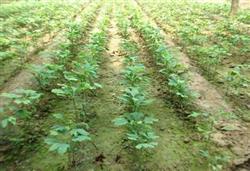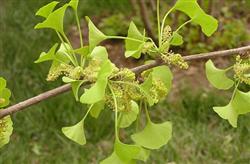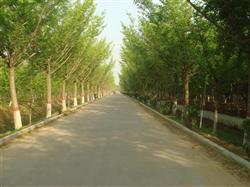Breeding of Ginkgo biloba seedlings by smooth wood cutting in autumn

1. Sand culture treatment collect branches of the same year around August 20, take 20 cm long and 30 cm as cuttings, immediately remove leaves (leaving a little petiole), bundle 10 into bundles and put them into sand culture beds. The humidity of green sand in the sand culture bed is held by hand and dispersed as soon as it is loosened. After 10-15 days of sand culture, the basal tissue of the cuttings healed to produce rooting points, and the cuttings were cut when there was no rooting. Second, the nursery bed is prepared to build a seedbed in places with sufficient light, close to water sources, and better conditions for drainage and irrigation. The topsoil of the bed was mixed with half of the sand to remove weeds and insecticides were used to control underground pests. The seedbed is north-south, 6 meters long and 1.5 meters wide, and the bed surface is 20 centimeters above the ground. Third, after the seedling bed is set up, the cuttings cultivated in sand are cut according to the row spacing of 6 cm × 15 cm, and the cutting depth is 10 cm. After cutting, the cuttings are stamped, watered and covered with film. Fourth, to build a sunshade after cutting, the scaffolding should be 30cm higher than the film surface, and the canopy cover can be covered with corn straw, Reed wood, etc., and the covering thickness should be white sunlight in the bed. The following spring, the cuttage ginkgo seedlings can be uncovered after leaf development, but the awning should be retained until September.
- Prev

How to make ginkgo early blossom and early fruit
First, drawing branches starts from the young tree stage of Ginkgo biloba, and the plants with small branching angles open through drawing branches to ease the growth of trees and branches and promote flower formation. The convenient bag containing soil can be tied to the tip of the upright branch at the beginning of May. The weight of the soil bag is determined according to the growth of the branch and the requirement of pulling the branch.
- Next

Skillfully pruning and dwarfing Ginkgo biloba to get high yield
Ginkgo biloba has strong adaptability and wide cultivation area, so it is suitable to be used as a street tree. The following introduces the cultivation techniques of ginkgo biloba as a street tree: first, seedling selection requires strong seedlings, well-developed roots, whitish xylem, slightly red root bark, and close to xylem. If the roots turn black, even if the trunk is green.
Related
- Fuxing push coffee new agricultural production and marketing class: lack of small-scale processing plants
- Jujube rice field leisure farm deep ploughing Yilan for five years to create a space for organic food and play
- Nongyu Farm-A trial of organic papaya for brave women with advanced technology
- Four points for attention in the prevention and control of diseases and insect pests of edible fungi
- How to add nutrient solution to Edible Fungi
- Is there any good way to control edible fungus mites?
- Open Inoculation Technology of Edible Fungi
- Is there any clever way to use fertilizer for edible fungus in winter?
- What agents are used to kill the pathogens of edible fungi in the mushroom shed?
- Rapid drying of Edible Fungi

